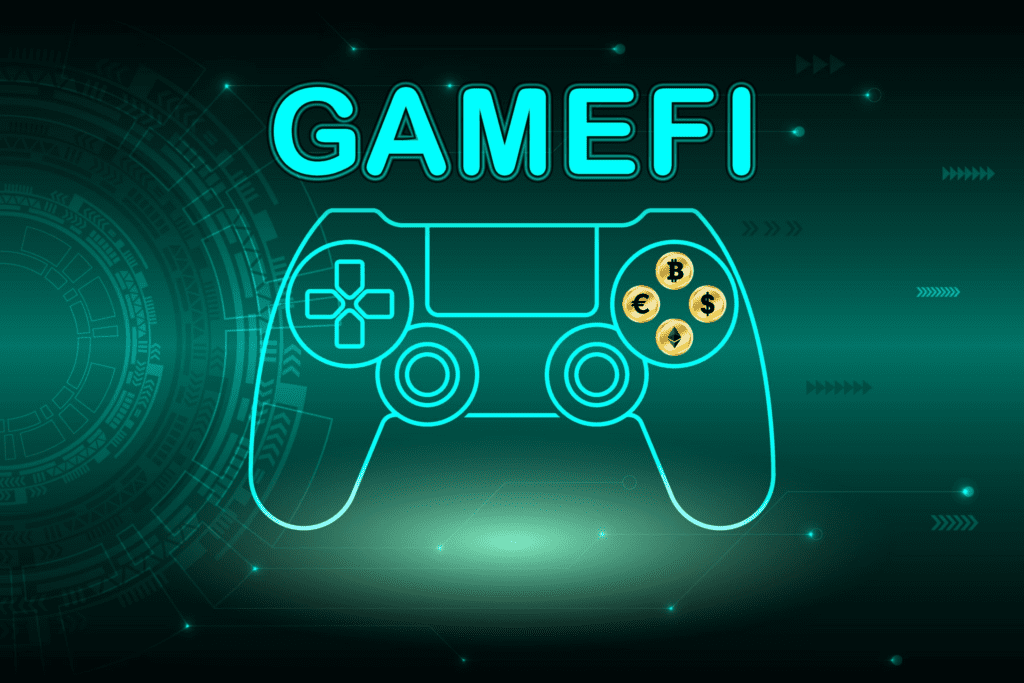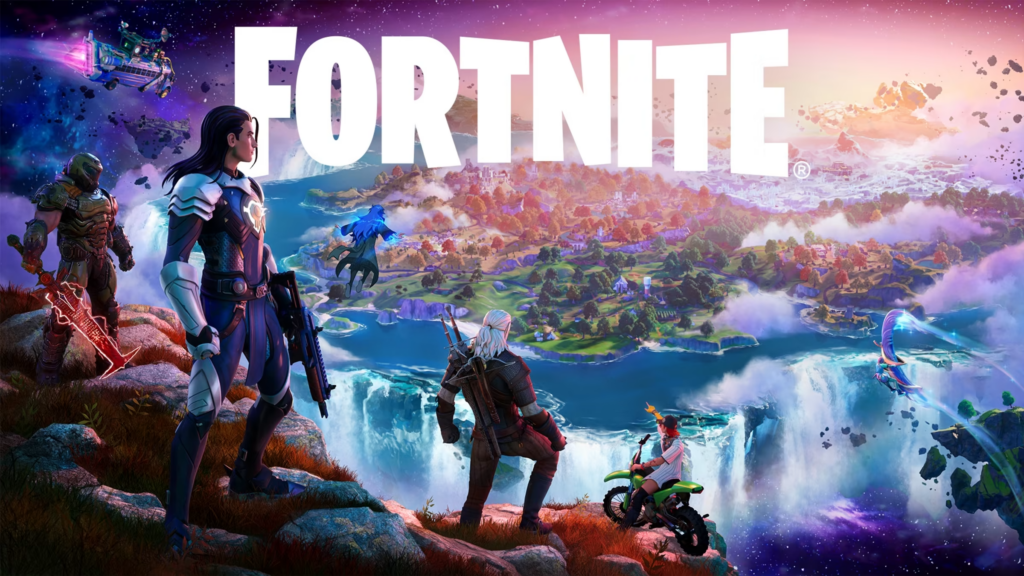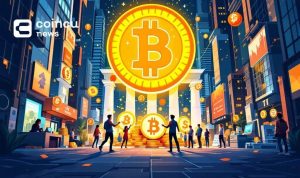2022 is an important year for the development of Play-to-Earn games. The influx of capital and users has created the brilliance of chain games, but the crypto bear market has also severely damaged the price of GameFi, resulting in a large loss of players. Especially after experiencing continuous blows from the crashes of Terra and FTX, the encryption market can be said to have fallen to the bottom.
Despite this, the development momentum of blockchain games has not diminished but is strong. Recently, the data research platform DappRadar released its blockchain market report for January 2023. According to the report data, in January 2023, “blockchain games are still one of the fastest growing parts of the Web3 industry”. The number of active independent wallets (dUAW) reached 839,436, and the proportion of the entire industry has further increased from 45.2% in December last year to 48%.
So can the blockchain game GameFi be called an opportunity to turn bears into bulls? How will the future of GameFi develop?

Barriers to entry for crypto games
For most people, entering the crypto industry is not only difficult but also requires a lot of capital. In the crypto industry, active capitalization can effectively incentivize blockchain users. Currently, the barriers to entry for capital into the crypto ecosystem are relatively low; with just a few dollars, you can interact with almost any dApp.
Of course, when you try to participate in other activities of a community nature, the cost will rise-whether it is an NFT or a DAO; the more funds the activity requires, the more “prestige” it will generally have. Beyond that, there are gas fees, poorly optimized contracts, and in many cases, token swaps/locks to consider. Of course, this assumes you already have money on-chain. But in developing countries with no good regulation, banking, or internet infrastructure, $5 gas fees are likely to be a significant portion of your salary.
However, that’s not the case with games. The gaming community is huge and very diverse, with people of all backgrounds detached from their real-life struggles to enjoy parallel virtual worlds.
A world where they can experience art, play sports or simply enjoy it as a social experience. The threshold for playing games is getting lower and lower, all you need is a smartphone and enjoy a social experience at the same time. And the vast majority of people don’t need to pay a penny for the software. So here comes the question for crypto game developers and the various VCs funding them: who exactly is your product catering to?
Ideal crypto gamer
From the perspective of VC, the perfect game player should include the following factors: love games, understand technology, and have money and leisure.
But what about the average player?
The average person who calls himself a gamer is a teenager with a home console, little money, and living on his parents’ income. They rarely buy $60-$80 launch-price games and mostly play free-to-play games. Ordinary players do not have technical knowledge, let alone the patience to learn the technical knowledge.
The average gamer wants to turn on their console, fire up their favorite game, connect with their friends via voice chat and play. For them, monetization primarily comes in the form of purchasing in-game assets, allowing them to buy skins or in-game items or to make their in-game characters more powerful.
Now, let’s analyze the gamer in crypto VC demand: this person is, first and foremost, someone over the age of 18. Second, this person needs to have money on the chain to participate, and not just a little money, but a lot (referring to the money compared to ordinary players). Third, the person must be interested in the game. Fourth, they need to have free time to actually play that game.
All in all, they cater to gamers of legal age who are crypto-savvy, tech-savvy, and have a lot of money and free time. But the number of such people is very small.
Of course, you can extract the most value from these few people who are truly web3 games, but after they leave, it means that the product is dead forever.
Imbalances in the crypto game
In crypto games, this is not the case. Scarcity is added to make items more valuable, nothing more; it degrades the gamer experience by restricting access to certain aspects of the game.
Additionally, scarce items are not rewarded to individual players with great skill and countless hours put in: they are permanently rewarded to the rich and powerful, which in the crypto industry is even less numerous. Of course, this represents an imbalance between the two main players in the crypto game: active players of the game and crypto traders.
Traders who do it for a living extract value from people who play purely for fun – what happens when players feel like they’re always losing at the end of the game? They will choose to give up. After all, they play games for fun; why would they play if it’s not fun? When this happens, the only remaining players are the traders who play the game for a living – and when conditions are no longer good, and all capital is withdrawn from those who got out earlier, the traders get out too.
Owning a rare item in online video games is a sign of advancement and status and gives players a sense of accomplishment. The problem with rare items in crypto games is trying to make the basic functional blocks of the game available only to players with disposable income: for example, take Metaverse Land, a virtual land represented by 1s and 0s on an immutable ledger.
On the other hand, how can it artificially manipulate its scarcity limit? We are not saying that land should be free because, after all, this is an attempt to rebuild a virtual economy – but letting the cost be determined by traders and institutions on a free market makes your game inaccessible to the average player at all.
If you want to provide a balanced experience for all participants, you need a monetary policy designed to include inflation. It is not the inflation caused by VC selling the vested token but the inflation of game design; the price is more or less in line with the intention of game developers.
This doesn’t mean that items and land should also have a fixed price (real-world economies have tried price controls and failed miserably); we are saying that some kind of intervention is needed, so prices don’t get too outrageous.
Of course, this is about items and commodities that are finite in the real world but potentially infinite in the virtual world. Don’t get me wrong: trying to simulate aspects of the real world in a video game can be fun; however, it’s not fun when the simulation affects the virtual experience in bad ways.
Items like wood, water, etc., should be infinite and available to any player without “investing” a penny. While our world is finite, the world of video games is not — something that is scarce shouldn’t just be there to create value for VCs.
Problems with in-game crypto assets
Now, let’s talk about the problem that plagues all crypto games: in-game assets.
Hypothetically a scenario that is likely to happen if (by some miracle) crypto gaming suddenly becomes mainstream overnight.
Suppose you have a son. He’s 12, and you just bought him a brand-new gaming PC. You also bought him DEFI GODS (a blockchain game) and he had a blast. He’s been playing with his friends for a few days now, and so far, so good, but he’s sad that his friends make fun of him for having a default skin (remember, we’re talking about kids here).
Your son comes to you crying, asking for $25 to buy skin from someone in the marketplace so he won’t be laughed at again. You reluctantly agree that you will be charged bank fees, gas fees, and LP fees after swiping your credit card (because you are buying a decentralized token issued by a game developer). Regardless, your child now has the equivalent of $25 in GOLD. Hours passed as he tried to buy skins from the in-game NFT marketplace — with no success. The price of the skin has increased by 2x, so he asks you for more money. You want to say no, but you can’t.
So you buy more GOLD, the price is halved against the dollar, and sellers ask for more, so… your kids ask you for more money.
Do you realize how crazy this scenario sounds compared to the normal “swipe, get coins, buy from the store” scenario? Even if the reserve price of the skin doubles, you don’t have to worry about the price of your asset against other assets tomorrow. But in the crypto world, where short-term volatility is a big problem, volatile crypto assets are not ideal for any economy. A currency should not be an investment, a currency should be treated for what it is – a currency with stable prices.

Pricing model
What did the games industry do right?
What is the crypto industry doing wrong?
Continuing on the topic of barriers to entry for games, we believe that the gaming industry is only possible because of its pricing model.
Most AAA games launch between $60 and (recently) $80. These prices have been the industry consensus since the 1990s. Back then, AAA game development was just technically more difficult but not as expensive as it is today. The tools we have today, combined with the ease of accessing assets and information, make the working environment for video game developers much easier than it was in the 90s.
So, if games are easier to develop than ever, why do games cost more? The reason lies in the scope of the ongoing project. Today, video games are bigger, livelier, and more authentic than ever before. So, if the games are bigger and take longer to develop, why are AAA PS5 games released for the same price as SNES titles? Don’t the companies that make them take inflation into account for the past 30 years?
But, more than three decades from the 90s to today, how do game developers maintain profit margins when a game’s launch price depends on anachronistic prices? The answer is simple: they started monetizing in-game items such as microtransactions, DLC (downloadable content), and loot boxes.
Here are two examples of games released by the same publisher with the same launch price and the same monetization strategy, but in the end, one failed miserably and the other is still the number one selling game every year: I’m talking about FIFA United (FIFA) and. Star Wars: Battlefront.
Take FIFA as a case study, a game that relies on loot boxes to get better players (which can drastically change the outcome of a match) and has the worst skill grind of almost any game, still selling thousands of dollars a year million copies.
Publisher EA is hoping to recreate that formula with one of the biggest IPs in history, Star Wars. Long story short, they released Star Wars: Battlefront with its powerful guns, enhancements, and characters, locked in for 700 hours of grind or a comfortable $20 in-game microtransaction (on top of the already full $60 game price ) later, which drove players and fans of the series crazy and angry and subsequently was not well received by the market. But if it works on FIFA, why doesn’t it work on Star Wars: Battlefront?

The answer is that FIFA already has the strongest player base in the world. There are people who buy the latest console just to play the latest FIFA every year when it comes out, and those users don’t play any other games, just FIFA.
These are the most casual types of gamers, and they don’t know any better about falling prey to a predatory capitalization scheme that mimics gambling. The problem is, even if you spend $200 on FIFA microtransactions, you can’t sell them on the secondary market to get your (real) money back, nor can you transfer them to the new FIFA that will be released next year. By analogy, gamblers gamble every year.
Star Wars is a different kind of game: it caters to a different type of gamer, the kind more committed to gaming as their primary passion and willing to play more than one or two games a year.
This type of player hates unfairness, and they’re outspoken about it. So much so that when EA tried to explain on Reddit why you have to pay more to play Darth Vader in a game you already own, they got rejected, so much so that they now hold the record for the most downvoted comments ever. The game sold poorly and the reviews were even worse.
Most games released today come with in-game microtransactions, but these don’t affect gameplay in some way, allowing someone with a bigger wallet to pass you in the ranks simply because they have the biggest wallet. Most of these microtransactions are purely cosmetic.
Games that launch today and have “predatory” capitalization plans, such as the Avengers games, Gotham Knights, Overwatch 2, etc., have all failed. There’s nothing wrong with adding microtransactions to a full-priced game as long as it doesn’t affect balance.
At the end of the day, cosmetics are vanity – and vanity isn’t necessarily something essential to core game mechanics. In fact, there are plenty of free-to-play games that rely entirely on decorations to make ends meet, like Fortnite.

This is where the crypto industry goes wrong: crypto developers, possibly influenced by venture capital and their own greed, adopt a hyper-capitalized crypto ethos and make everything cost money so they can fill them with a Ponzi game pocket. Having items locked up by whitelisted NFT mints, secondary NFTs on the market rising to stratospheric levels, and people getting rich playing video games only to see their “investments” crash to zero later on.
You can’t attract people to play your game on the premise of playing your game-if you need more and more people every day to keep your Token and game running, then when no one takes over, it will collapse. This is the “Ponzi scheme” in traditional industries.
If a crypto game is to be successful, it needs to be realistic in terms of pricing and capitalization. “Crypto was founded to give people more economic freedom”, it shouldn’t be hard to apply this concept to video games, but everyone who has tried has failed.
Crypto has a stigma around centralization, and the most extreme forms of decentralization are celebrated — but video games don’t benefit from extreme decentralization, which needs to be balanced between developer control over players in games like crypto This is especially true in economies we are trying to create; otherwise, leaving the free market completely laissez-faire would mess with pricing in a way that would avoid most gamers.
P2P trading should be encouraged, but the game should still provide enough to allow someone starting from scratch to reach the top without spending a dime of their own — either by honing in countless hours or becoming a good trader. How they release the game for $60-80 or free is up to the developer, but they should be aware of predatory capitalization mechanics if they want to have a chance of success.
Possible solution
We discussed issues such as barriers to entry, a small audience, unbalanced integration of gambling and speculation into games, artificial scarcity, volatility of game tokens, and wrong incentives and economic models that prevent ordinary players from participating. Now are some solutions, but a warm reminder, personal opinion, for reference only, does not mean 100% correct.
- Everyone should be able to play, not for riches, but for fun.
The solution to the gaming barrier to entry is simple: Make games accessible to everyone. By everyone, I mean: from whales with millions in crypto assets to Thai gamers who have never heard of Ethereum. To put players on equal starting terms regardless of whether they have money or not so that barriers do not exist. Not only that, but you also need to remove the technical hurdles that come with custodial wallets.
A few ways to achieve this are through social recovery wallets or centralized wallet systems. If a player wants to log in with their own wallet, the average non-technical user shouldn’t have to worry about it, and it can’t be any harder than logging in with an email or Google account. Not only that, but if the game is free, it should be able to play from start to finish without paying a penny.
Either the game subsidizes every action worth recording to the blockchain (I think of Validium L2 or something like L3s that StarkNet is working on) and you can run it on a centralized server and once the user wants to do it inside the game’s own, You can choose to mint items on the blockchain by trading on a secondary market outside of the marketplace. It follows that reducing friction on the technical side of blockchain-related content is critical to user experience.
- Balance of money and time investment
Balancing is not an easy task. Game developers have been trying to achieve balance for decades, but that doesn’t mean it’s an impossible task: it can be achieved by making all players more or less equal at the start of the game, which Depends on the player’s individual skill player.
A wealthy player shouldn’t buy all high-performance tools, weapons, or items to begin with; requiring a minimum level of experience or level completion before being able to use or trade certain items should be the norm so that “free “Players don’t get discouraged.
However, you should try to keep P2P transactions to a minimum; every item in the game should be able to be minted or acquired by anyone, no matter how much they invested – whether it’s zero dollars or a thousand dollars. Don’t tip the scales toward the top 1% just to squeeze as much value out of them as you’ll alienate free players, which basically come with the whales.
Yes, legitimate investments should be able to be made in the game, like artwork, clothing items, bunks in prime locations, owning resources and certain items or tools. If a player (or DAO) wants to build a giant structure, they need to buy a lot of wood. Instead of felling by hand, they sweep the floors of wood available in the market, making the wood more valuable. Players see that wood is scarce and valuable, so they start cutting and selling wood, which is infinite after all – you could say all kinds of arbitrage are being created here.
An example of an item as a legitimate investment/speculative vehicle: imagine the Charizard event is coming up, and smart players will stock up on wood, knowing that the Charizard will burn down the forest. When Charizard starts burning the forest, the price of lumber will skyrocket no matter how long the developer thinks the event should last and then return to normal prices when the event is over. Almost like the real world, except there are no charizard and other events at play with our limited resources.
- Currency needs to act as a store of value, not a vehicle for speculation
If you buy bread for $1 today, there is a high probability that it will be $1 tomorrow. Of course, the price may not be the same over time due to inflation, but the devaluation of assets is not necessarily of any benefit. Players need to always be confident that their assets are valuable and won’t drop to zero tomorrow. A game cannot have assets with the same value as those in the real world. Just making a packaged stablecoin Token and giving it another name is not only perfunctory and uncreative but also makes controlling the economy and issuing rewards (a fancy word for airdrops) It is more difficult for developers.
Therefore, we are not suggesting hard, stablecoins nor volatile tokens. The Olympus Protocol effectively forgoes some APY in favor of so-called range stability: OHM remains liquid, decentralized, and trades within a certain range. Such things can be done, but developers can control the emission so that not only can developers benefit from it, but it is easier to control rewards and control supply. Who doesn’t love the good old quantitative easing?

- How to generate income?
You are creating a virtual economy where you can tax as much as you want and issue as many assets as you want before the revolution happens. We would suggest a buy-and-sell tax on certain items in NPC and P2P transactions; the exact amount depends on the item and its rarity. This tax would be a source of revenue. Another source is the merchandise you create. That ever-expanding parcel with random resources lets players buy land from you for a (very small) price — the money doesn’t come from the value of individual parcels, but from the volume and taxes you collect.
Another way to create an income stream is through decorations. You can give out paint for your decorations, player skins, clothing, and more. The item is first sold from your shop to the player, then people resell it, and you get taxed. Not only that but there will be some players who want to enter this new virtual economy. No friction in the case of any player wanting to do this – people are willing to pay below market rates to mint your assets if it saves you the hassle of creating self-custodial wallets and then transferring them.
In-game ads could be another way to generate revenue. As long as they are not displayed in an intrusive manner, they can be a good source of income in the later stages of game development.
Conclusion
One of our minor complaints when it comes to crypto games is that most of them are unoriginal and repetitive. No one outside of crypto wants to play Ancient Crypto Gods: Tomb of Satoshi Nakamoto or Blockchain Games: Legend of Vitalik. Please put the effort into how you present your game to the general audience!
DISCLAIMER: The Information on this website is provided as general market commentary and does not constitute investment advice. We encourage you to do your research before investing.
Join us to keep track of news: https://linktr.ee/coincu
Harold
Coincu News















